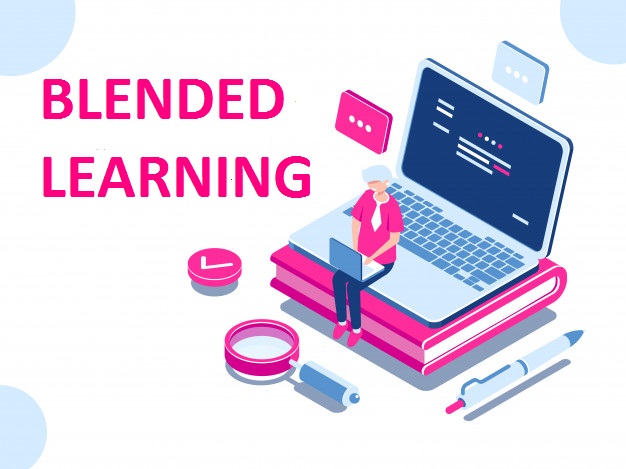BLENDED LEARNING STARTS WITH PEOPLE, NOT CURRICULUM*

In six months, the world has changed significantly. We have experienced school closures and seen the impact of those closures and intermittent learning environments bring into question the state of the global education system. While some countries have students back in the physical classroom, many are still struggling with school re-opening. With the continued uncertainty of COVID-19, teachers and students must adapt to new learning formats–digital, blended, etc.–for the unforeseeable future.
Now what?
The last six months have been dedicated to understanding the current landscape and what is needed. Now is the opportunity to collaborate with stakeholders in the education industry to ensure we have a sustainable framework to address topics like blended learning, and ultimately improve students’ learning outcomes. By collaborating on the development of an education blueprint, solutions and a refinement of approaches, we have a better opportunity of accelerating a shift into modern, equitable, personalized education.
The world’s readiness for educations digital transformation
As each country deals with transitioning to remote learning, we have seen positive approaches emerge and examples of quick shifts to “stop school, but not learning.” Those countries who can pull this off are those who have already fully embraced digital transformation. These schools often have:
- Installed an interactive collaborative board in each classroom with a collection of digital content available
- Several multi-media classrooms set up on campus, which can do real-time recording, broadcasting, or become a teacher’s content creation hub
- Implemented purpose-built teacher and student devices, and provided continuous technology training
- Started incorporating data-driven insights for student engagement, teacher efficiency and personalized blueprint for learning
No matter what stage each country’s readiness for a modern education system, this pandemic has fueled a massive expansion of digital devices. There are federal, local, and private communities getting together to provide personal computing devices in the hope to of reaching all students. The shift to digital has made it clear that the current generation is not only adept to digital technology, technology is also a part of how they operate daily. Schools must start considering inclusive, technology-enabled learning to provide effective and engaging education to our children and in the “language” that this generation responds to and understands.
Where do we start?
A key driver of transforming education starts with people. Teachers, parents and students are facing new challenges daily. By understanding these challenges, we can develop better solutions.
Based on our experience partnering with students, parents, educators, and district leaders, it is clear there is no shortage of challenges, however, some of the common themes we identified are:
- Ways to keep students engaged and motivated
- Ease of use and improved tools for teachers
- A learning environment (physical and virtual) that would provide continuity to students, parents and teachers
Overall, there is a shared desire to empower teachers. In particular, it is creating solutions that support an environment centered around the student, supported by both schools and teachers. This school/teacher-centric approach helps us focus on the ways to build a blended learning journey that enables teachers to deliver a great learning environment. Imagine a new blended classroom with:
- Collaborative boards that can bring physical and virtual students together in one classroom and enable the option of teaching in the physical classroom (alone) using available assets.
- Creative digital content and format that keeps student’s attention and encourages learning.
- A purpose-built teacher device that is portable, with built-in functions of content creation, recording, broadcasting, remote sharing, and large screen view that is intuitive to use.
- Devices that are seamlessly integrated with any Learning Management System (LMS) and automatically process work activities with notifications.
- Digital readiness, that enables needed data insights that will empower the right digital roadmap for our teachers, improve efficiency and deliver better personalized teaching for our children.
Looking forward
The technology community and the education industry must continue to work together to solve current challenges and create solutions to improve learning outcomes. Together, we can identify the right issues, find the critical focus and implement needed technology in schools, empowering our teachers and schools first to drive the best learning journey for our students.
*This article was wrote by Wei Huang Oania and published in https://blogs.intel.com/technology/2020/09/blended-learning-starts-with-people-not-curriculum/#gs.uxk3fv

